As world leaders gather for the second week of the COP28 Climate Summit in Dubai, Copenhagen is building a new wooden city that could “triple the area’s biodiversity through birdhouses and other animal habitats integrated into the facades.”
The project, known as Fælledby, has led planners to suggest that the timber-rich design could provide other cities with a path to develop precincts’ sustainability without compromising climate commitments.
Designed by Henning Larsen, the architect behind the rejuvenation of the University of Faroe’s ancient campus, the World of Volvo, and the “Climate Positive” Danish school made of straw and mass timber, the masterplan is setting a new standard for how modern communities can live in with nature in harmony.
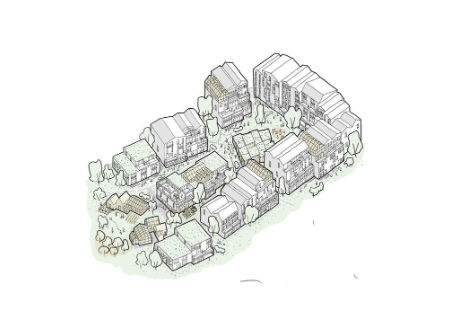
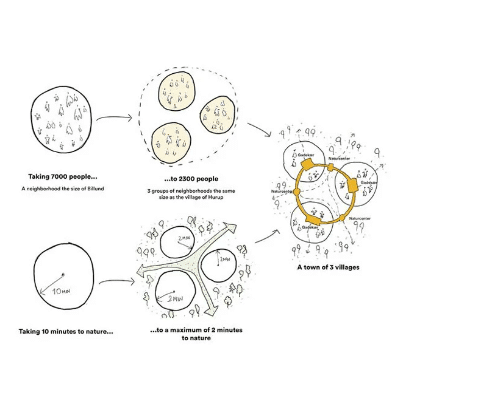
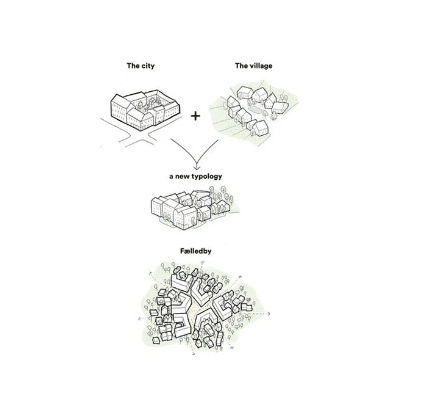
Initially unveiled in 2019, groundwork is underway on the former landfill site, with the neighbourhood to eventually house up to seven thousand new residents.
Signe Kongebro, Partner at Henning Larsen and lead designer, said the project is “Copenhagen’s first to be built fully in wood, incorporating natural habitats that encourage richer growth for plants and animals.”
“With the rural village as an archetype, we’re creating a city where biodiversity and active recreation define a sustainable pact between people and nature,” she said.
She said the developer, By & Havn and Pension Danmark, insisted that timber be the prevailing building material used on the project, “ultimately creating as sustainable a community as possible.”
The new community, located on the outskirts of Copenhagen, crowned the UNESCO World Capital of Architecture earlier this year, is part of a global push to embrace timber construction in the cities of the future.
In June, Wood Central revealed that Stockholme is planning to construct a five-minute “Wood City” – the largest of its type, whilst the world-renowned Archibiotect’ is behind the project, which will create a timber district on the banks of Lake Geneva.
The use of timber in these projects is part of a global shift to use low-carbon construction materials to lower embodied carbon, with more than 40 countries worldwide supporting “The Buildings Breakthrough” – which targets ‘near-zero’ and resilient buildings by 2030.
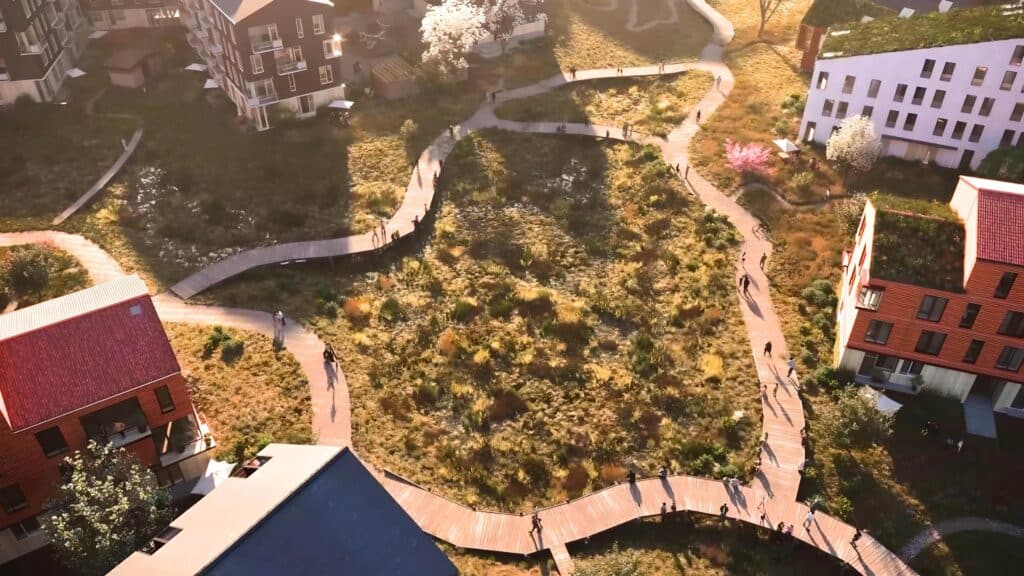
The wooden buildings, spread across the 18-hectare grassy footprint, will sit on a foundation of tiles, according to Ms Kongebro, who spoke to local Danish press overnight.
“So there’s no digging in the ground. That’s part of the low carbon emission of the whole construction, which is almost zero.” Also, she said, using timber over conventional materials, like steel, concrete and aluminium, “makes constructions twice as fast.”
And when it comes to award-winning architecture, Copenhagen punches above its weight, with no other city matching it on a population basis.
According to Jens-Kristian Lütken, the Copenhagen Mayor of Employment and Integration, the city’s success in architecture has created an environment, or a culture, where the city is also at the forefront of net-zero construction.
He said using low-carbon new materials and recycling carbon-intensive building materials can help developers stay within emission limits.
“The construction business, they’re throwing out a lot of things. Can we reuse them? And can we be a role model for the rest of the world? That’s a way to save a lot of CO2,” he told the Danish press.
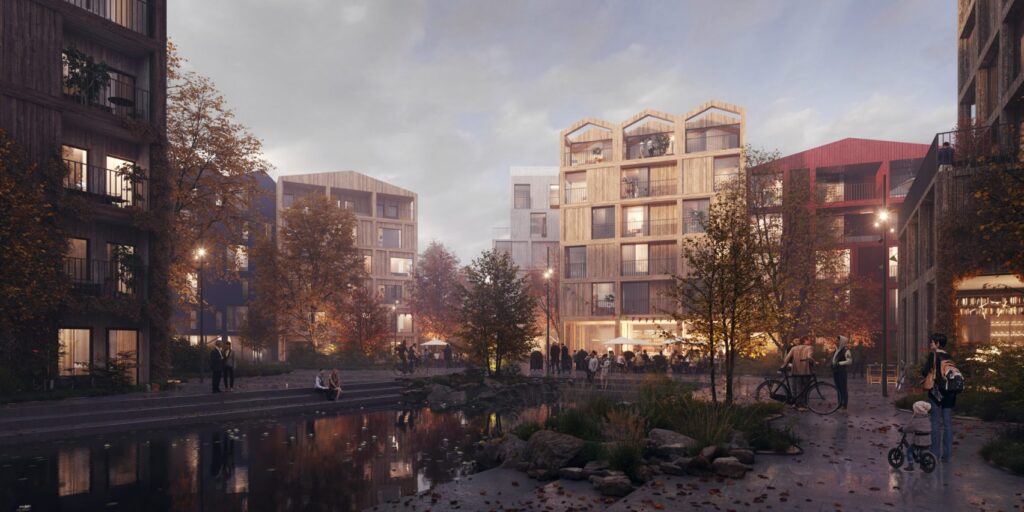
In addition to prioritising timber use, steel beams and columns from the previous building are now being recycled and reused where reasonably practical.
“This project also shows a way into the future how big cities are going to be developed in a completely new way,” Ms Kongebro said. “Instead of just doing high-rises in concrete, we’ll have to find a new type of design to have all species flourishing: people, animals, and plants.”
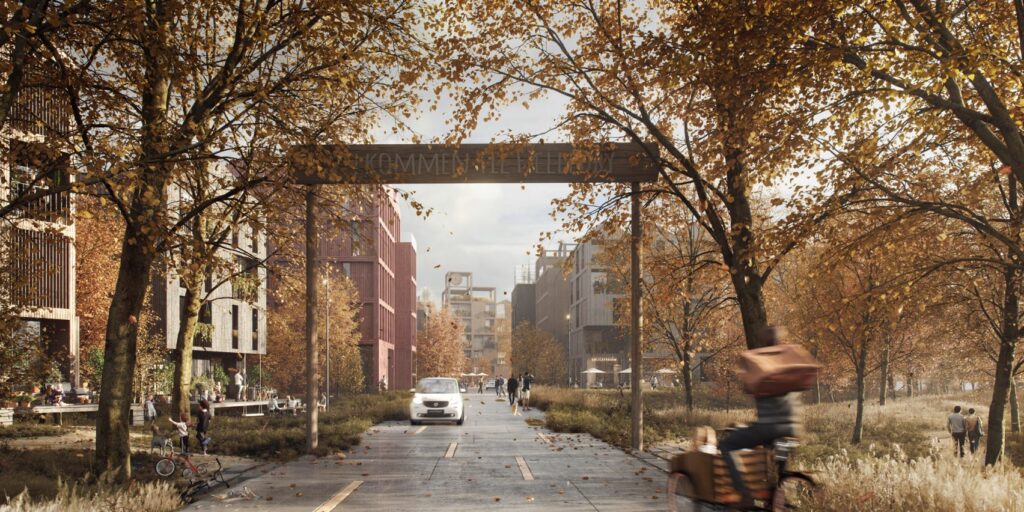
If all goes to plan, the construction will be finalised in nine years, with more than 40% of the footprint preserved for local flora and fauna – with green corridors dividing the neighbourhood into three smaller enclaves.
“These corridors allow residents increased and direct access to nature, but more importantly, will enable the animal species of amager fælled to move freely through and within the area,” according to Henning Larsen.
“Additionally, nests for songbirds and bats are built into the walls of houses, new ponds in the centre of each of fælledby’s three communities offer a habitat for frogs and salamanders, and community gardens create new flowers to attract butterflies, wholly integrating nature within the masterplan.”






